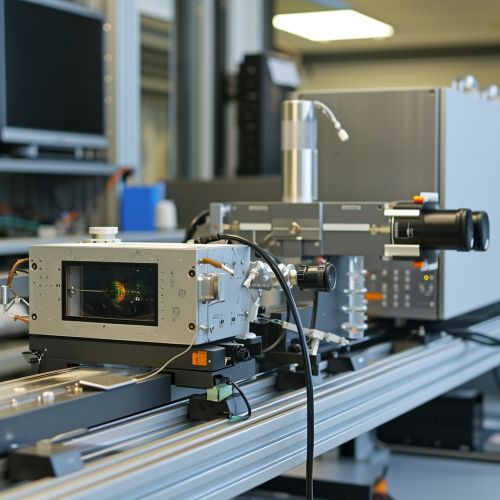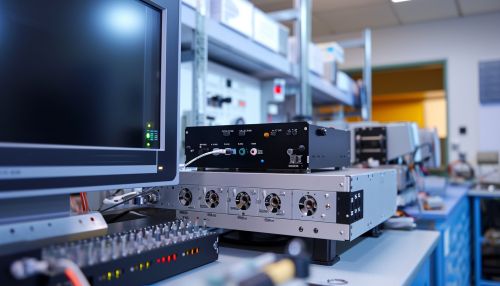Optical parametric amplifier
Introduction
An Optical parametric amplifier (OPA) is a type of amplifier used in the field of optics to amplify an optical signal. OPAs are based on the process of parametric amplification, where the energy of a high-frequency pump wave is transferred to a lower-frequency signal wave and an idler wave. This process is facilitated by a nonlinear optical medium.
Principles of Operation
The operation of an optical parametric amplifier is based on the principle of parametric amplification. In this process, a high-frequency pump wave is passed through a nonlinear optical medium. The medium allows for the interaction of the pump wave with a lower-frequency signal wave, resulting in the amplification of the signal wave and the generation of an idler wave.
The process of parametric amplification is based on the nonlinear optical effect. This effect is a result of the nonlinear response of the medium to the electric field of the light waves. In the case of an OPA, the nonlinear medium is typically a crystal with a high nonlinear coefficient.
Amplification Process
The amplification process in an OPA involves three waves: the pump wave, the signal wave, and the idler wave. The pump wave is the high-frequency wave that provides the energy for the amplification process. The signal wave is the lower-frequency wave that is to be amplified. The idler wave is a wave that is generated as a result of the amplification process.
The pump wave and the signal wave are combined in the nonlinear medium. The medium facilitates the interaction of these waves, resulting in the transfer of energy from the pump wave to the signal wave. This energy transfer results in the amplification of the signal wave and the generation of the idler wave.
Applications
Optical parametric amplifiers have a wide range of applications in various fields. They are used in optical communication systems for signal amplification. They are also used in spectroscopy for the generation of tunable light sources. In addition, they are used in laser technology for the generation of short laser pulses.


Advantages and Limitations
The main advantage of an OPA is its ability to provide high gain over a wide frequency range. This makes it a versatile tool in optical communication systems and other applications. In addition, the process of parametric amplification does not involve the absorption and re-emission of light, which reduces the noise in the amplified signal.
However, OPAs also have some limitations. The main limitation is the requirement for a high-frequency pump wave. This requires a high-power laser, which can be expensive and difficult to operate. In addition, the process of parametric amplification is sensitive to the phase matching condition, which requires precise control of the optical path lengths.
